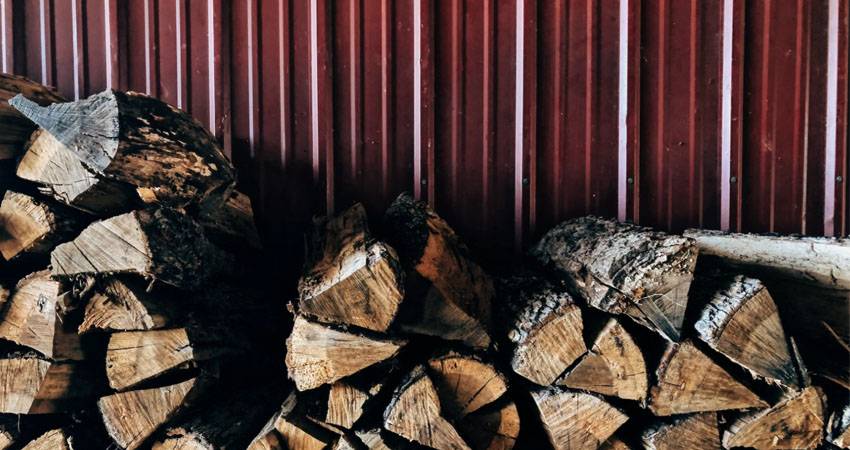When it comes to your kitchen renovation, why not go beyond aesthetics and embrace a more sustainable approach? Embracing eco-friendly home renovation allows you to incorporate green practices into your project, minimizing your ecological footprint and ultimately providing long-term benefits for your wallet.
On average, renovations typically result in approximately 60 pounds of waste per square foot based on an article by Northstar Clean Technologies. So, to help lessen our contribution to landfill, this article will discover simple yet impactful changes that not only enhance the aesthetics and functionality of your kitchen but also contribute to a greener, healthier planet. Let’s start!
Choosing Sustainable Materials
Instead of opting for brand-new materials, the beauty and sustainability of reclaimed and renewable resources can add rustic and contemporary style to your kitchen renovation. There are many more options available, so explore local salvage yards, architectural salvage stores, and eco-friendly building material suppliers to find the perfect sustainable materials for your project. Here are some examples:
- Reclaimed Wood: Utilize reclaimed wood for kitchen cabinets, flooring, or countertops. Salvaged from old barns, factories, or demolished structures, reclaimed wood adds a unique rustic charm to your kitchen while reducing the demand for new timber.
- Salvaged or Reused Brick: Incorporate salvaged or reused bricks for backsplashes or accent walls in your kitchen. These bricks, sourced from demolished buildings or construction sites, bring a sense of history and character to your space while reducing the need for new brick production.
- Recycled Glass Countertops: Choose countertops made from recycled glass. These countertops are created by combining crushed recycled glass with binders, resulting in a stunning surface that adds colour and texture to your kitchen while diverting glass waste from landfills.
- Bamboo Flooring: Opt for bamboo flooring as a sustainable alternative to hardwood floors. Bamboo is a highly renewable resource because it grows rapidly. It offers a durable and stylish flooring option that is eco-friendly and contributes to the reduction of deforestation.
- Reclaimed Metal: Use reclaimed metal for kitchen hardware, fixtures, or decorative accents. Salvaged from old buildings or industrial sites, the reclaimed metal adds an industrial and vintage appeal to your kitchen while reducing the need for new metal production.
Maximizing Natural Lighting and Ventilation
The power of kitchen renovations opens up the opportunity to optimize the use of natural light and effective ventilation strategies to create a bright and fresh space. Strategically position windows in areas that receive the most sunlight throughout the day. If you have limited wall space, skylights are an excellent option while floor-to-ceiling glass panels can create a warm and inviting atmosphere. Using glossy or reflective materials for backsplashes and countertops can make the space brighter.
No one wants the whole house to smell when cooking so during your renovation, consider ventilation systems that remove cooking odors, excess moisture, and indoor air pollutants. Range hoods with built-in exhaust fans are an excellent choice for removing smoke, steam, and airborne particles generated during cooking. Fresh herbs, potted plants, or even a vertical garden can thrive in your kitchen, adding a touch of greenery and contributing to indoor air quality.
Efficient Water Management
Water is a valuable resource and one of the simplest and most effective ways to conserve it in your kitchen is by installing water-efficient fixtures. Old faucets with low-flow aerators can be replaced to reduce water flow without compromising pressure. Dual-flush or low-flow toilets can also minimize water usage. If possible, invest in a sensor-based faucet that activates only when necessary, reducing water waste from running taps.
Installing a greywater system collects and treats water from sources such as sinks, showers, and dishwashers, and repurposes it for non-potable uses like watering plants or flushing toilets. Water can also be used by rainwater collection barrels or tanks to capture rainwater from gutters and downspouts. Optimize sustainability by educating yourself and your family members about water-saving practices, such as turning off the faucet while brushing teeth, using a basin to wash vegetables, or fixing any leaks promptly.
Waste Reduction and Recycling
Before embarking on your renovation, take a moment to do some kitchen cleaning and decluttering into your plan. There might be items you can repurpose to minimize waste. Refurbish existing cabinets, countertops, or appliances instead of replacing them entirely. If they should be discarded, donate or sell these items to numerous organizations, thrift stores, and online platforms. This ensures that usable items find new homes while reducing waste.
Food waste is a significant contributor to landfill waste and greenhouse gas emissions. Install a compost bin or a worm composting system to transform organic waste into nutrient-rich compost for your garden. Aside from providing natural fertilizer, your kitchen renovation project can divert food scraps from ending up in landfills.
Energy-Efficient Lighting and Appliances
Appliances play a role in the functionality and energy consumption of your kitchen. Here are some strategies to help you prioritize energy efficiency:
- Use LED lighting: Replace traditional incandescent or fluorescent bulbs with LED bulbs, as they consume significantly less energy and have a longer lifespan.
- Install sensor or motion-activated lighting: Innovative technologies ensure that lights are only activated when needed, automatically turning off when no motion is detected.
- Choose energy-efficient appliances: Look for appliances with the Energy Star label, indicating that they meet strict energy-efficiency standards.
- Optimize appliance placement: Ensure proper airflow and ventilation around appliances such as refrigerators and ovens and avoid placing appliances near heat sources or in direct sunlight.
- Conduct regular maintenance: Clean the coils of your refrigerator, keep oven and stove burners clean, and replace any faulty bulbs promptly.
Final Thoughts
Incorporating green practices into your kitchen renovation is not just a trend; it is a responsible choice for a better future. By prioritizing sustainable materials, maximizing natural lighting and ventilation, and choosing energy-efficient appliances, you can create a kitchen that aligns with your eco-conscious values. When you’ve finally decided on a kitchen makeover, it’s best to hire an experienced professional team to achieve your renovation project! Through these conscious choices, you contribute to a healthier planet and set an example for others to follow.






